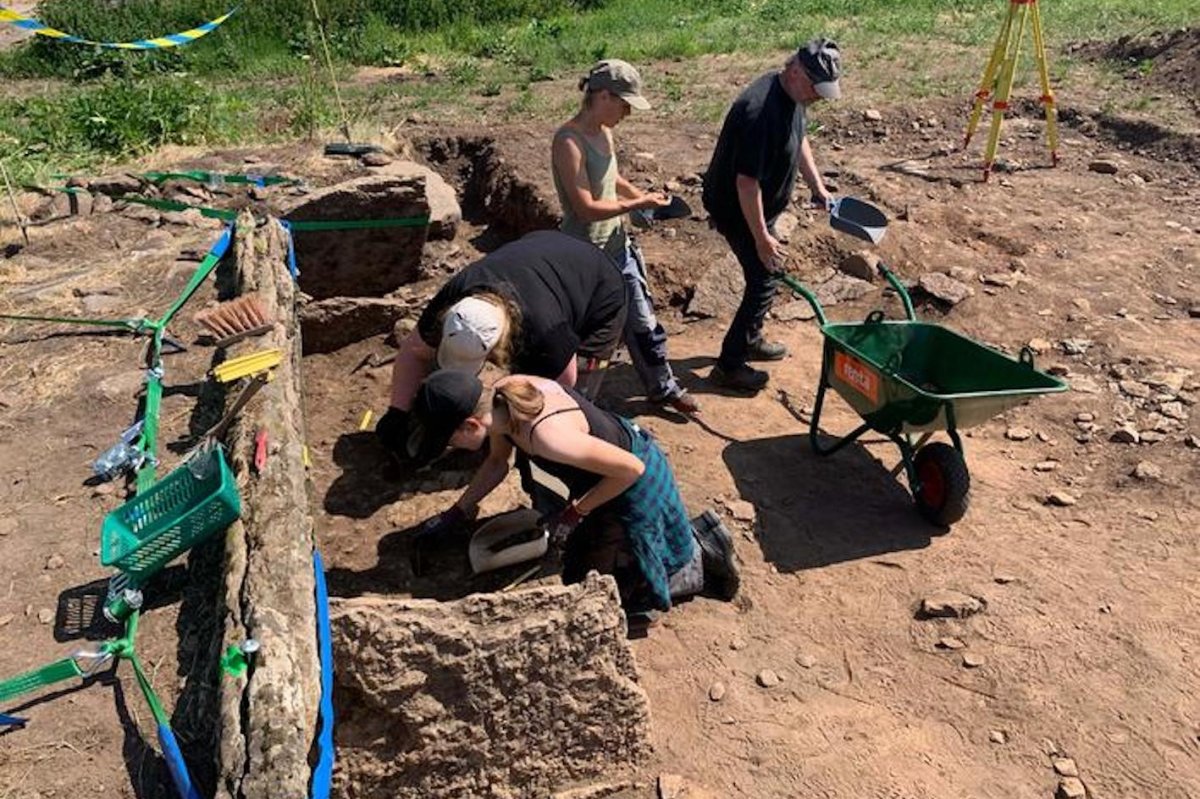-
Dozens Are Killed at Aid Site Near Border, Gaza Health Officials Say - 1 day ago
-
30 hurt when car slams into crowd in Hollywood - July 19, 2025
-
Astronomer CEO Andy Byron Placed on Leave After Video at Coldplay Concert Exposes Alleged Affair - July 19, 2025
-
Blood in the Streets and Death in the Air: Residents Survey Damage in Syrian City - July 17, 2025
-
Army vet calls for investigation after being detained for three days in ICE raid - July 17, 2025
-
Tariffs Push Up Prices, and the Supreme Court’s ‘Shadow Docket’ - July 16, 2025
-
ICE arrested her selling tamales at Lowes. Then she suffered a heart attack. ‘I told them: I can’t breathe’ - July 14, 2025
-
The Royal Box: Who’s in Wimbledon’s Most Exclusive Seats? - July 13, 2025
-
David Gergen, Adviser to Presidents and Political Commentator, Dies at 83 - July 12, 2025
-
Federal judge temporarily halts alleged indiscriminate immigration stops - July 12, 2025
Stone Age Burial Mystery as Remains Are Found to Be Missing Skulls
Research has yielded fascinating new insights into a Stone Age burial site in Sweden where archaeologists have documented a mysterious set of human remains.
The grave in question is a dolmen, a type of single-chamber prehistoric tomb constructed using large stones. It is located in Tiarp parish in the geographical area of Falbygden—which is centered around the town of Falköping in southwestern Sweden.
Hundreds of dolmens have been found in north-central Europe and southern Scandinavia alone. The Tiarp dolmen, which is surrounded by cultivated agricultural land today, was originally discovered in 1929 when a farmer cleared a mound. It was studied by archaeologists at the time and then again in 2014, which was when researchers discovered that the grave was more or less intact and had bodies buried inside.

Cecilia Sjöberg/University of Gothenburg
But a team of researchers from Sweden’s Gothenburg University and Germany’s Kiel University, Germany, wanted to investigate further to uncover the dolmen’s secrets. In the summer of 2023, the archaeologists excavated the dolmen, and a subsequent analysis of the grave has yielded important new information.
The study, which has been published in the Journal of Neolithic Archaeology, has confirmed that the tomb is one of the oldest stone burial chambers in Sweden and across all of Scandinavia.
The team’s dating work revealed that the grave was likely constructed around 3500 B.C. during the Early Neolithic period and was likely used for burials in two different phases. The first was around 3500 to 3400 B.C., while the second was from 3400 to 3300 B.C.
The researchers also determined that the bones in the grave—most of which date to the first phase—belong to at least 12 people, including infants and elderly individuals.
One puzzling aspect of the remains is that some parts of the people buried in the grave are missing or are few in number, including skulls and large bones such as those of the thigh and arm. At the same time, the researchers found that small bones of the hands and feet are well represented, together with teeth and rib fragments—an unusual discovery.
“This differs from what we usually see in megalith graves, i.e., stone burial chambers from the Neolithic period,” Karl-Göran Sjögren, an archaeologist with Gothenburg University, said in a press release. “Usually, the bones that are missing are smaller bones from feet and hands.”
Archaeological observations and soil analysis at the grave point to the integrity of the ground layers in which the remains were found. This suggests that the missing bones must have been removed in the Early Neolithic period, but the reason why remains a mystery.
“Skulls and large bones are missing and may have been removed from the grave. We don’t know whether that has to do with burial rituals or what’s behind it,” Sjögren said.
It is also unclear how the individuals buried in the grave died, something the researchers are attempting to ascertain.
“We haven’t seen any injuries on the people buried so we don’t think violence is involved. But we are continuing to study their DNA, and that will show whether they had any diseases,” Sjögren said.
Using DNA analysis, the researchers are also trying to determine whether the individuals in the grave are related.
“The preliminary DNA results show that the DNA in the bones is well preserved. This means we will be able to reconstruct the family relationships between the people in the grave, and we are working on that now,” Sjögren said.
Do you have a tip on a science story that Newsweek should be covering? Do you have a question about archaeology? Let us know via science@newsweek.com.
Uncommon Knowledge
Newsweek is committed to challenging conventional wisdom and finding connections in the search for common ground.
Newsweek is committed to challenging conventional wisdom and finding connections in the search for common ground.
Source link














